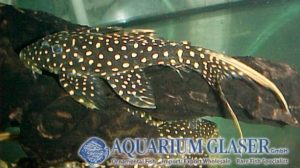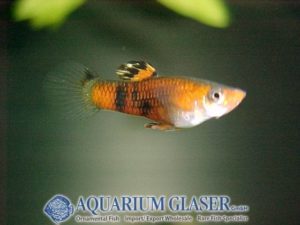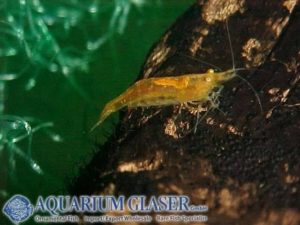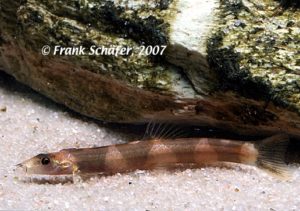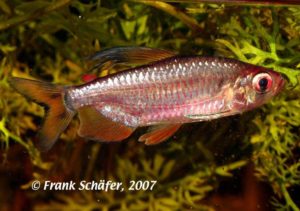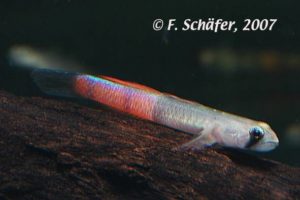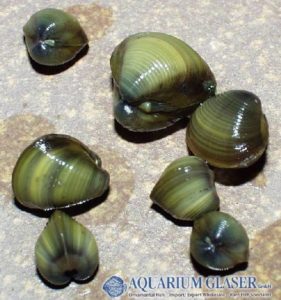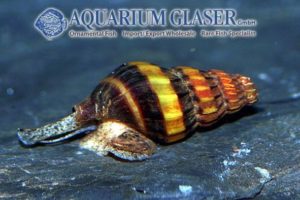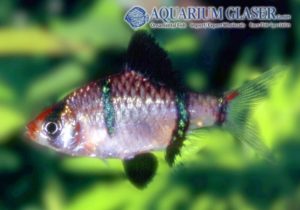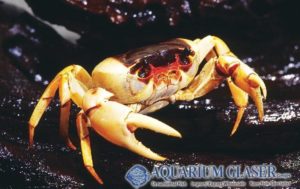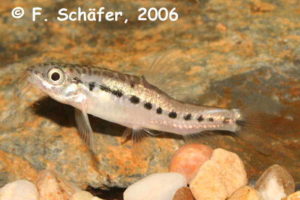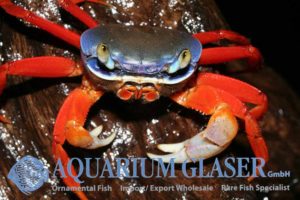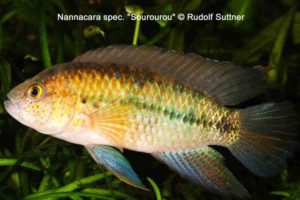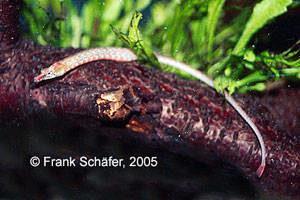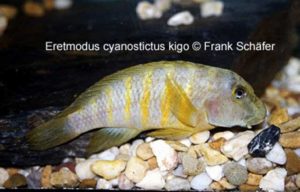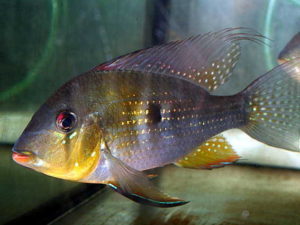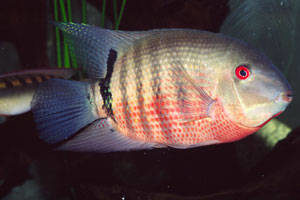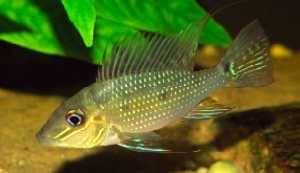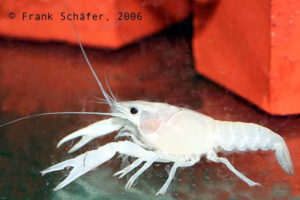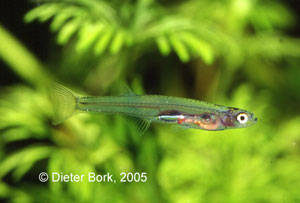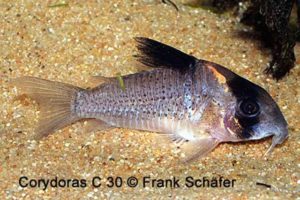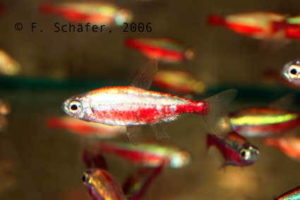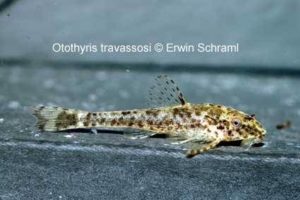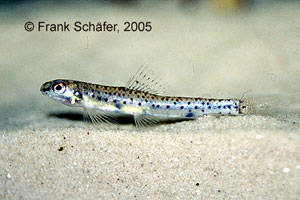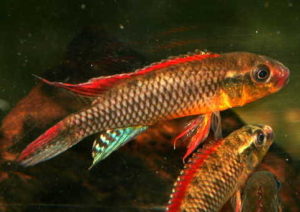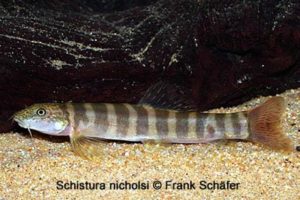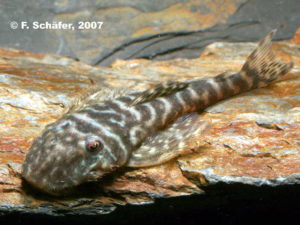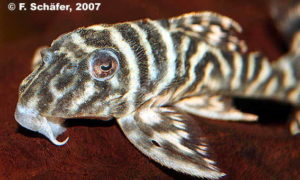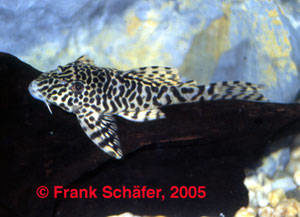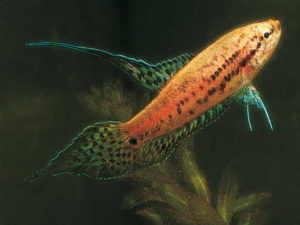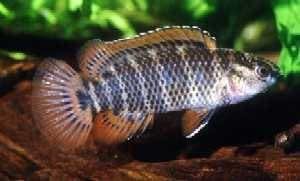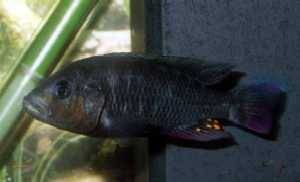Photo: Frank Schäfer
Fish Archive (2963)
-
-
Eretmodus cyanostictus “Makombe”
Actually we can offer very pretty Tanganyika Clowns, Eretmodus cyanostictus, from Makombe. Like so many other cichlids from the lake they have developed a lot of different geographical varieties. Eretmodus are highly specialized fishes. In the wild they live in the very shallow water of the shore. Here, in the surf, they feed on aufwuchs. […]
-
Great variety of freshwater stingrays available at Aquarium Glaser
The export stop of freshwater stingrays (Potamotrygon) has ended and so the very much sought after black species (P. henlei and P. leopoldi) are regulary available now again. Beside these Brazilian black rays we have astonishing Flower rays (P. schroederi) from Colombia and Venezuela, fantastic „King Marble”and Fire Spot” from Colombia (called P. motoro in […]
-
Schistura cf. jarutanini
The brook loaches of the genus Schistura are far spread over South and Southeast Asia. There are hundreds of species, most of them still scientifically undescribed. Almost each flowing water has it´s own species. So it is no surprise that some of the species also became cave-dwellers. We could import a small number of individuals […]
-
Import season for Orinoco-Plecos has startet!
The Rio Orinoco is with more than 2.000 km length one of the biggest rivers of South America. About 3/4 of it´s length it runs through Venezuela, the remaining 1/4 belong to the territory of Colombia. The Brazo Casiquiare connects during high water levels the Orinoco-sytem with the Amazon-sytem via the Rio Negro. The import […]
-
Pyrrhulina laeta
It is quite long ago that we were able to import this wonderful tetra. But now we can offer it again! Including the caudal fin the males can reach 12 cm in length. Males are generally larger than the females. A characteristical pattern for the species is the black line that extends to the level […]
-
Toxotes jaculatrix
Seven species of Archerfishes (Toxotes) are known. Three of them (T. lorentzi and T. kimberleyensis from Australia and T. microlepis from South East Asia) are usually found in fresh water. Two are practically unknown, at least they have not been kept in aquaria so far: T. blythi from Burma and T. oligolepis from the Moluccas. […]
-
Betta splendens
We have a new supplier for fighting fish (Betta splendens). Besides the amazing males (which we will introduce to you detailed in the near future) there are also wonderful females. Text & Fotos: Frank Schäfer
-
The Odessa barb has finally been named: Pethia padamya
There is a good number of well known aquarium fish that bear no scientific name, so they „officially” do not exist at all! Only with a formal scientific description a name can be applied to a species that is binding for every person in the world. On the other hand, common names can be given […]
-
Chilodus gracilis
There are four species of the small headstanders of the genus Chilodus. Only two of them appear in the hobby. According to reports the Spotted Headstander (Chilodus punctatus) is the most common species in the hobby. But, in fact, it is not. The species found most is Chilodus gracilis which can be distinguished from […]
-
Brachyplatystoma
The catfishes of the genus Brachyplatystoma are some of the most important foodfish in the basins of the Amazon, the Orinoco and the countries of the Guiana shield. Some of them may reach a length of 360 cm and a weight of 200 kg. Many thousand tons are landed each year, which led to local […]
-
A great number of Leporinus species in stock
Actually, Aquarium Glaser has many Leporinus species in stock. These are often very attractively coloured large tetras which are perfectly suited for large and show aquaria. Text & Photos: Frank Schäfer
-
Danio sp. Panther
The smallest species of Danio known so far was now imported by Aquarium Glaser after some time again from Burma. The species is termed Danio sp. “Panther”, as it is not described scientifically yet. It becomes only 2-3 cm long. It is a schooling species that fits perfectly to smaller aquaria. Temperature should be chosen […]
-
Pearlscale
The goldfish is the eldest ornamental fish species in the world. For hundreds of years it has been bred on highest levels. Although the western aquarium hobby is unthinkable without the goldfish and its varieties the main breeding centres are still located in the east of Asia. It is very important to know where a […]
-
Barbus erythromycter – Lipstick barb
The males of this unique dwarf barb (maximum size around 4 cm) have a red “walrus moustache”. Until the scientific description of the species in 2008 it was known in the trade as Barbus cf. puntio. Text & Photos: Frank Schäfer
-
Baryancistrus L18, L81, L81n, L177
The main collecting season of the beautiful gold seam sucker cats of the genus Baryancistrus starts around end of may and lasts until the end of september. Although these fishes are common in the wild, live in shallow waters and are traditionally used as food fish, they cannot be connected with one of the about […]
-
Pterophyllum scalare Blue Dwarf
In 1949 Werner Ladiges mentions a blue dwarf angel (Pterophyllum scalare) that appeared by chance (problably by mutation) in a large breeding stock before WW2. Beside its unique blue coloration a characteristicly feature of these fishes was their small adult size. They never grew bigger than 5 cm body height. Although this stock survived WW2 […]
-
Boehlkea fredcochui now Knodus borki
Dr. Axel Zarske found that the species imported for decades under the name Boehlkea fredcochui in truth represented a species of the genus Knodus so far unknown to science. The real Boehlkea fredcochui was now and then imported under the trade name Boehlkea sp. Sky Blue. So our good old aquarium fish is now named […]
-
Auchenipterus nigripinnis
For the first time ever we were able now to import a catfish from Argentina which is new for the hobby. It looks amazingly similar to the Asian shark, Pangasianodon hypophthalmus (a well known synonym of that species is Pangasius sutchi). The identification of the new fish wasn´t easy, but thanks to Ingo Seidel from […]
-
Telmatherina bonti
The Malili lake system on Sulawesi (former Celebes) is home of spectacular shrimps, snails and mussels which are exported for the hobby. Now the import of an endemic atherinoid species was successful, namely Telmatherina bonti. Like many atherinoides of the Malili lakes this species is polychromatic, which means that males and females appear in different […]
-
Limnopilos naiyanetri
Described in 1991, Limnopilos naiyanetri Chaung & Ng, has only just been discovered by the hobby. Crabs are found in pure freshwater in the roots of floating vegetation, ie. water hyacinth (Eichornia crassipes) and fine-leaved aquatic plants along the riparian zone (river banks). They have hairy bodies and appendages which collect mud and dirt and […]
-
Corydoras sp. „Uruara“ CW037
(Nov.13th 2008) This beautiful Corydoras is from Brasil, from Rio Uruara , which flows into Rio Curua Una south of the Amazonas to be exact. It was imported to Germany only in very small numbers. The more pleasant it is that bred ones are available for the first time. The catfish recall very much of […]
-
Hyphessobrycon pyrrhonotus Gold
(Nov.10th 2008) The so called „gold dust disease“ of the bloodfins is a very interesting phenomenon, which happens to very many bloodfin species. The best known one surely is the gold-tetra, Hemigrammus rodwayi whose number of gold-dust-sick animals in nature is higher than of the normal coloured ones. The gold-dust-sick animals were even considered as […]
-
Acantopsis sp.
(Nov.6th 2008)Due to its unusual head shape the horseface loach A. coirorhynchos is one of the most popular aquarium fish. In nature they often are residents of clear rivers, where you can find them especially on sandy grounds. Inside the aquarium you also have to provide sandy ground, which allows them to completely bury themselves. […]
-
L90 Panaque var.JUANJUI
Last week this very attractive variant of L 90 arrived from the vicinity of Juanjui (Peru). They are very intense light-dark patterned fishes with glowing red eyes . The white filaments of their caudal fin give them an additional elegance. Feeding with special food (shrimps, or red discus food)can change fin colors to a strong […]
-
New Guppies available!
From now in limited numbers available: beautiful strains of Guppies! Please note that you will get for all the strains the correct females.
-
Ptychochromis oligacanthus
They come from the crater lake Bempazawa on the island Nosy Be nearby Madagascar and we have few of them available for first time: Ptychochromis oligacanthus “Bempazawa”. Their final length is more than 20 cm, but with their current size of about 15cm, they already reached sexually maturity. They have no special demands for food […]
-
Herichthys sp. BLUE-GALAXY
(Aug.6th 2008) A brand new star is born: Herichthys sp. Blue-Galaxy. We are proud to be able to supply limited numbers of this this beautiful breeding form for the first time. They are pubescent in a size of 6-8cm, which they have successfully demonstrated in a tank in our office. Since they should not get […]
-
Impressions of our shipment from Argentinia on July 29th 2008
-
Stiphodon semoni
(23.Aug.2008) From Indonesia we received this beautiful neon-blue goby. Stiphodon semoni grows up to 4-5cm and was several times imported under the wrong name Sthiphodon elegans. Its habitats are fast floating hillstreams with rocky ground. It is found in Indonesia, the Philippines, New Guniea and the Solomon Islands. The nourishment for this item is easy: […]
-
Synodontis granulosus
(June 6th 2008) Actually we are able to supply one of the most beautiful member of the Synodontis family. They come from the Lake Tanganjika so they need harder water with a higher pH. These are extremely active fishes which grow up to 25cm, so they should only be kept in bigger tanks. Adults are aggressive […]
-
3500gramm & 35cm: Serrasalmus rhombeus BLACK
They have this amazing size, the Black Piranhas we received last week from Peru.We got a group of 3 pieces in 3 big double-boxes….and all arrived in a perfect condition.They are really beautiful: very graceful but also really verythreatening. Very fascinating!
-
Parathelphusa pantherina
(21.Mai 2008) Last week we received from the Matano Lake in Indonesia a very beautiful crab: the panthercrab. Since they live nearly totally under water, they need only a small terrestrial part in their tank. A hard water with a temperature from 25-29°C is favored. They can be easily fed with all kind of foods; […]
-
Glanidium melanopterum
(09.May 2008) A real strange fish was now imported by us from the south of Brasil. This fish belongs to the Glanidium family and shows a size of about 40cm, which is really big for such an fish. They look very calm, but during the night they start to eat….everything what they can get into their big […]
-
Sphaerichthys vaillanti
(25.April 2008) A real beauty made by nature is currently available: Sphaerichthys vaillanti. This fish, which is called red chocolate gourami, is without any doubt the best looking one of all 4 Sphaerichthys members. The water should be soft, not too cold (25-29°C) with a low pH (4,5-6,5). If you offer these water parameters, you […]
-
Oreoglanis siamensis
(21.April 2008)…and again we got something very rare: Oreoglanis siamensis. But only a very few pieces. They live in the Mekong area and the Chao Phyraya basins. In the northern part of Thailand you can find them in the mountain area of Mae Nam Ping and Doi Chiang Dow. They are found in fast floating […]
-
Corydoras duplicareus
(17.April 2008) An old friend and also a newcomer: Corydoras duplicareus. Not a long time ago, this beautiful catfish was sold as Corydoras adolfoi. For a non-expert the differences are not clear on the first look. The main difference is the black band, which is more wide than from C. adolfoi. It is definitely a […]
-
Uaru fernandezyepezi
(9.April 2008)For the first time we can offer some offspring of Uaru fernandezyepezi. The home of this extremely rare cichlid is in the border area of Colombia and Venezuela, where they occur in the area of the Rio Atabapo. From there origin some challenging fishes such the Altum-Angels. Their requirements are similar, the water hardness […]
-
Crenicichla sp.ATABAPO FIRE Venezuela
Last week we got a very small amount of one of the most beautiful pikecichlids: Crenicichla sp.ATABAPO FIRE Venezuela. Sorry for the bad picture, but it was taken directly in a tank in our facility, not in a photo-tank. But it shows how nice this fish is!
-
Sinogastromyzon wui
(18. Feb.2008) Last week we received this loach which was described by FANG 1930. Their habitat is from the Nanpan-jiang and Xi-jiang basins in Guangdong to Guanxi provinces in China. The maximum size is about 8-10cm. They should be kept in cold water, not over 22-23°C, and they have very high oxygen requirements. To offer […]
-
Homaloptera tweediei
(14.Feb.2008) The adult size of the gecko-loach, Homaloptera tweediei, is only approx. 4cm. This species is very interesting for the hobbyists, because they can be kept for a longer period in a water temperature of more than 24°C. The main reason is the origin in central Thailand. After acclimatisation they are very thankful and easy […]
-
Coenobita cf.pseudorugosus
(11.Feb.2008) Again a new “crawler”: Coenobita cf.pseudorugosus. From Asia we received this super red hermit crab. The conditions to keep them are similar to all other land hermit crabs. Noteworthy are the nice flats they carry: from screwdriver snails of 5-6cm which the hermit quit the leasing contract…because of own requirement….(Photo F.Schäfer, Text R.Neunkirchen)
-
Lamprichthys tanganicanus
(04.Feb.2008) Currently in stock: Lamprichthys tanganicanus in excellent quality. As the name suggests they originally come from Lake Tanganyika where they inhabit the open water zone. Because they are very active swimmers, their brilliant azure-blue shimmers in constantly changing hues. With a size of 12 cm they are suitable for almost each Tanganyika tank and […]
-
Hypancistrus spec. L 173b
(19.Feb.2008) After a long break back in our stock: German offspring of L 173. This very rare Hypancistrus is probably the most closely with L 46 related species. As juveniles they look like zebras with an irregular stripe pattern. Their final size is a little larger than L 46 L also their clutches are larger. […]
-
Allenbatrachus grunniens
(01.Feb.2008) Toadfish – a funny name for a funny family, the Batrachoididae. There are only 73 representatives of this family worldwide. Their name is coming from noises which they can generate and sounds like the callings of toads. Toadfish have a venomously spine on the gills and their dorsal fin and when you catch them, […]
-
Corydoras sp. C 115/116
(16.Jan.2008) This Longnose armored catfish was caught by Hoffmann & Hoffmann in Peru in a small canyon 50km away from Puerto Maldonado toward Boliva in 2004 and brought along legally. The very variable drawing, from monochromatically grey to big black spots on the sides of body (hence C115 and 116) is interesting. The breeding is […]
-
Bryconamericus/Hemibrycon sp.
(16.Jan.2008) These beautiful, agile, steel-blue shining tetra, which grow up to approx. 6cm were caught by Hoffmann & Hoffmann in a clearwater stream in Peru nearby the Andes in 2004. Six animals reached Germany and could be bred. They do not need much warmth, 24°C are sufficient. The youngsters grow slowly. An exact classification was […]
-
Cheirodon sp. (A)
(16.Jan.2008) The most colourful type of the three different Cheirodon/Odontostilbe species caught by Hoffmann & Hoffmann in Peru in 2004, which cannot be classified exactly is Cheirodon sp. (A). The animals have red coloured belly- and anal fins, males more intense than females. Also these fish were already often bred. They are productive and fast-growing.(Photo […]
-
Auriglobus silus
(21.Dec.2007) Streched Puffer is his name. This week we recieved this frisky puffer from Thailand. They are easy to keep and do not need special water parameters. In bigger sizes they can tend to fight between themselves. All in all it is an interesting puffer, which will be kept mainly from experts or experienced hobbyists. […]
-
Platy BLEEDING HEART BLUE COMET
(19.Dec.2007) Also this new bred variety arrived here last week. Currently we only have a few pieces in stock, which are males only. The coloration “bleeding heart” – the deep red basic colour, which is only restricted to the below body half – can only appear at males for genetic reasons. The females cannot be […]
-
Sewellia sp. Spotted
(19.Dec.2007) This, very attractive, probably scientifically not described hillstream sucker reached us from Vietnam. They remember on Sewellia lineolata but their point pattern is finer and also is the for S. lineolata characteristic “stripe” missing. Like all hillstream suckers they come from fast flowing water, there they inhabit rapid flowing streams where they graze on […]
-
Poropuntius laoensis
(19.Dec.2007) For the first time Aquarium Glaser was able to import this barb, which is sized 20-25cm and which is quite unnoticeable at first sight. It usually residents in clear wood bourns in the catchment area of the huge Mekong River. The peaceful animals turn out to be very colourful, if you look closely. Especially […]
-
Alpheus cyanoteles
(17.Dec.2007) Pistolshrimp…that`s what they are called. Currently we have a very limited number in stock. Generally this is a brackish item, which is totally adapted to live in freshwater. They come from the peninsula of Malaysia. They can create a sound like the shoot of a pistol, which is why they are called Pistolshrimp. You […]
-
3 new varieties of Barbus tetrazona
Since last week we can supply 3 new breedingforms of the Tiger-Barb. They are called gold-green-stripe: albino-platinum: and green-platinum: From now we will have those on a regular base in stock.
-
Tylototriton shanjing
(13.Dec.2007) One of the most beautiful representative of the genus Tylototriton is available: T.shanjing. These beauties comes not on a regular base. Their habitat is the middle and western part of the chinese province Yunnan, Laos & Myanmar. They live in subtropical forests in an altitude of around 2000meters. The females lay up to 300 eggs […]
-
FIRST TIME IMPORTED: Arothron firmamentum
Just yesterday we got from Burma an marine pufferwhich was caught in pure freshwater: Arothron firmamentum. This is the first time that this item was found in freshwater and we hope that we can provide more details about them soon.
-
Macrobrachium sp.RED CLAW
This amazing shrimp arrived last week: Macrobrachium sp.RED CLAW. We received a very limited number of this item, which is coming from east Borneo. Our supplier told us that he never shipped them to Europe before. This picture is showing a male, if you click on the small blue fish next to the picture, you […]
-
Occidozyga lima
(30.Nov.2007) From now available on a regular base : Occidozyga lima, the floating frog. These funny guys come from Indonesia. They are easy to keep and should be kept in small groups of at least 10 pieces. They only grow up to 3-4cm and show no sexual dimorphism. They eat all kind of small flies like Drosophila, but […]
-
Isichthys henryi
(29.Nov.2007) Currently in stock: one of the rarest Mormyrids in the world: Isichthys henryi. Our supplier from Guinea informed us that this item appear only 2-4weeks per year! So it only can be called luck to have nearly one hundret pieces right now in stock! To keep the single is recommended, because they are agressive […]
-
Caridina cf. propinqua
30.Nov.2007) Now we are happy to have them available in big numbers : the mandarinshrimp, Caridina cf. propinqua. Yesterday we received a good quantity of this beautiful shrimp from our supplier . Their origin is the isle of Sulawesi. So far we can say are they easy to keep; the females grow up to 2cm […]
-
Hypostomus isbrueckeri
(28.Nov.2007)At the moment we have a group of nearly full-grown Hypostomus isbrueckeri in stock. The here pictured male is easily distinguishable from its partners by the bright colors of the caudal fin. This is probably the only Loricariid species which shows such a pronounced gender difference. Their origin is the border region Brazil, Argentina, and […]
-
Brotia herculea
(27.Nov.2007) Last week we got giant screwdriver-sanils: Brotia herculea. This snail grows up to 10cm and belongs to the Pachychilidae family. There are also other interesting members of this genus like B.pagodula and B.henrietta; the second one is even currently available. They are easy to keep like most other snails and are mainly active from […]
-
Macrobrachium rosenbergii
(26.Nov.2007)The genus Macrobrachium rosenbergii is playing a very important role in the Aquaculture in many regions of asia. Mainly in Thailand they are bred in huge numbers for human consumption. This shrimp belongs to the family Palaemonidae and from time to time they are mported to Europe. But when you find this very nice shrimp […]
-
Megalancistrus parananus L234
-
L 27 Pan.cf.nigrolineatus XINGU
Currently available: from the Rio Xingu we got this really beauty L-27 male. With a total length of about 40cm is this fish adult. He is definitely pubescent, which you can see on his long beard and Odontoden. The real nice black/golden contrast makes this fish very interesting!
-
Pseudacanthicus spec. Typhoon
(2nd.Nov.2007) For the first time we can offer Pseudacanthicus spec. Typhoon. This extremely attractive Cactus Pleco comes from Brazil, its origin is kept as a secret, so that no information concerning the river were they have been caught can be made. In the appearance they reminiscent of Pseudacanthicus spec. “Titanic” L 273, the colour (black […]
-
Micropoecilia picta RED
(15.Jan.2008) FINALLY in good quantities available: MICROPOECILIA PICTA RED. From now we will have this beautiful fish on a regular base in stock. We get it from our breeder by pair. A much better availability is now guaranteed. (Photo & Text R. Neunkirchen)
-
Caridina cf. propinqua /Orange Shrimp
A NEW ARRIVAL of the week: Cardina cf. propinqua! This beautiful orange shrimp arrived yesterday. The latin name is Caridina cf. propinqua. We got a limited number of this extreme nice shrimp. Basically they are easy to keep, but if they will start to loose their colour, you just have to reduce the pH. This […]
-
Schistura pridii
(19.Oct.2007) Last week we received another new item: Schistura pridii. This beautiful small loach (grows up to 4.5cm) comes from Thailand. Exactly they were found in the upper Chao Praya Bassin in the Chiangmai province in the north of Thailand. They come from cool (18-24°C) & fast floating rivers, containing hard and alkaline water, which […]
-
Phenacogrammus cf. ansorgei
(12.Oct.2007) Last week we received a real beauty from Zaire: Phenacogrammus cf. ansorgei. This species grows up to 8cm and was caught in the Lac Mai Ndombe. In the past this lake was called Lac Leopold II. This is a “blackwater” lake, this means all fish from there should be kept in a pH of […]
-
Sicyopus zosterophorum
Actually in small numbers available: Sicyopus zosterophorum. This loach is coming from the Pinang river in the western part of Sumatra. Until now they were not imported in big numbers, so we do not know much about keeping them. But an experienced hobbyist should not be faced with big problems with keeoping this item.
-
Corbicula sp.
From Corbicula sp., a maximally 3 cm long mussel, we can offer 2 different colour types. They are hermaphrodites, whose larvae do not, contrary to some other kinds of mussels, exhibit parasitical stages. Since they filter their food from the water, they clean it of suspended matters, bacteria and protozoa. So they can be called […]
-
Anentome helena
mg class=”alignnone size-full wp-image-147928″ src=”http://www.aquariumglaser.de/wp-content/uploads/Anentome-helena.jpg” alt=”” width=”591″ height=”394″ /> From now available: the snail-eating snail ANENTOME HELENA. This item coming from asia, is perfect cleaning your tank from snails. The snail is finding her victims with her trunk. With a total length of about 1,5cm is this item also suitable for very small tanks, in […]
-
Barbus (Puntius) tetrazona BLACKFIN
We got them! For the FIRST time in europe we have a small amount of german bred “Black Finned Tiger Barbs” (Kapuas area)in stock! This is the REAL Puntius tetrazona. In 2006, a privat hobbyist imported 8 pieces of this species. Mr. Dieter Bork bred a a small amount for us, which is actually available. […]
-
Demanietta sirikit
Just last week we got a few pieces of the beautiful thai crab Demanietta sirikit! This crab lives in 50-100cm long tunnels near by the riverside. They are building their homes so deep until they reach the level of the groundwater. In the mating season they look for a partner. This happens during the rainy […]
-
Subscribe for our newsletter!
As one of the main innovations you can subscribe to our newsletter from now on! No matter if you are our customer or “just” an ornamental fish hobbyist, who is interested in news around his hobby. Simply subscribe to our newsletter and you will be getting informed regularly (until revoked) with news and interesting facts. […]
-
Yunnanilus brevis
They behave like barbs, scientifically however they belong to the loaches. Completely contrary to the bottom-oriented way of life of their relatives they populate the free water range as swarm fishes. Their homeland is Burma, where they live in slowly flowing waters and the boundary region of lakes. With a length of approximately 6 cm […]
-
Cardisoma armatum
From the coasts of West and Central Africa originates Cardisoma armatum. The bright orange colored legs form a strong contrast to the blue body and let this crab become an attractive ornament. With a carapax diameter of approximately 10 cm it does not belong to the smallest crabs, therefore a spacy tank has to be […]
-
Nannacara spec. -Sourourou-
From the Crique Sourourou in French Guyana originates this beautiful new Nannacara variant. We are pleased to be able to offer some offspring to you. According to information of an experienced Nannacara specialist their maintenance is unproblematic, even in middle hard water. The breed however succeeds only in soft and sour water according to their […]
-
Enneacampus ansorgii
The small freshwater pipefish originates from Western Africa, from Cameroon to Gabun and in the Zaire- and Ogowe River. These fish inhabit freshwater as well as brackish water habitats. Addition of sea salt (1-2 teaspoons per 10 litre of water) will therefore increase the vitality of these fish. This species, but actually all freshwater pipefish, […]
-
Eretmodus cyanostictus „Kigoma“
Eretmodus cyanostictus is among the group of cichlids called gobies. Gobies only occur naturally in the surge habitat of Lake Tanganjika, which is the upper meter of the water at the shoreline. They unique in that their swim bladder is non-functional, meaning that when they’re not swimming, they drop to the bottom like a rock. […]
-
Acarichthys heckelii
January 2007: At present we can offer particularly beautiful Acarichthys heckelii from the region around Santarem. These fish are characterised by an intensive yellow colouring of the body. It forms a beautiful contrast to the red eyes and their magnificent fin rays. Acarichthys heckelii has a large area of origin along the Amazon and the […]
-
Heros severus
Despite the fact that Heros severus is the type species of the Heros genus, this species is the most uncharacteristic representative of this group. This is mainly caused by its reproducing behaviour, which is mouthbreeding and untypical for Heros, because they are all substrate breeding. Also the coloration is different from the other members of […]
-
Satanopera acuticeps
Normally the durable care of Satanopera acuticeps is only possible in soft and sour pH-value. But as it was finally successful to breed this eartheater inside the aquarium, it could be that the bred ones are easier to keep and even easier to breed. So far the breeding was possible furthermore only in soft (< […]
-
Camptandrium sp.
July 2006: Few days ago we could import a new attractive crab species. It belongs to the genus Camptandrium, the species is yet not determined. They originate from India, where they were caught on the banks of the Ganges river in the proximity Calcuttas. There they live in estuaries and a therefore a salt additive […]
-
Procambarus clarkii „WHITE“
Under the numerous color forms of the Red Swamp Crayfish is Procambaris clarkii „White ” at present very popular. They are tough tank inhabitants, easily to reproduct and possess a high reproduction rate. Procambarus clarkii does not place large requirements towards the water chemistry, a strong filtering is however necessary, since they have a strong […]
-
Danionella aff. Mirifica
This species is the smallest representative of the carp family. It length does not exceed 1.5 cm. This fish comes from Myanmar (former Burma) and is imported only rarely. It is a typical shoaling fish and apparently lives in nature in large formations. Male fish attract the females for mating with clear croaking noises. These […]
-
Labiobarbus leptocheila
Labiobarbus leptocheila is a up to 30 cm long barb originating from Southeast Asia. There it is found from the Mekong area over the Malayan peninsula to Java, Sumatra and Borneo. Typically for the genus Labiobarbus is the protracted dorsal fin, as well as through black marks on the scales formed longitudinal stripes. In their […]
-
Corydoras sp. C 30
Corydoras C 30, a scientifically still not described species, originates from the area of the Amazon delta (Federal State Amapa) in Brazil. In its appearance it reminds of Corydoras melanistius a further north in Surinam and Guyana occurring species. Like all Corys C 30 should be held not in a to small group (5 – […]
-
Cheirodon spec. „Gold Neon“
At present we can offer some Cardinals of the variety „Gold Neon“. This is one of some more in the wild rarely existing colour forms of Cheirodon axelrodi. Actually it is not clear whether this colour forms are distinct species or varieties of the cardinal. At the “Gold Neon” the blue colour strip is replaced […]
-
Otothyris travassosi
This rarely imported catfish species originates from the federal states Bahia and Espirito Santo at the coast of brazil. With only 3cm of total length it belongs to the smallest Loricariids. There habitats are small and fast running streams. They mostly stay in areas thickly covered with vegetation. Otothyris travassosi is not a fish for […]
-
Ammocryptocharax sp. „spotted“
This scientifically undescribed ground tetra originates from Peru. This is a peaceful species also when housed with delicate fish. This is a medium size tetra fish, which probably does not grow larger then 5 cm. If more then one male of this ground tetra inhabits the tank then they can become somewhat territorial and therefore […]
-
Nanochromis sp. „Lezas“
With Nanochromis sp. “Lezas” we can offer a further highlight of German bred fishes. As at the before introduced species this dwarf cichlid is hardly to be exceeded in colour and quality. Particularly noticeable is the strong red colouring of the dorsal – and the upper parts of the caudal fin. In dark, peat-coloured water […]
-
Schistura nicholsi
To an unusually large about 200 species comprehending genus belongs Schistura nicholsi the Redtail Zebra Sand Loach. It originates from the Mekong basin in Thailand and Laos, where it inhabits fast flowing waters on a stony ground. This is to be considered during its aquarium maintenance. In order to ensure a high oxygen content and […]
-
Ancistrinae spec. L 189
Several adult specimen of L 189 the wormline – Orinko catfish arrived with an import of L 257 Pseudolithoxus tigris. On this shown male, the odontodes on the head, breast and ventral fin are clearly visible, that absolutely states a belonging in the Pseudolithoxus group. Puberty is approximately reached at 7 cm, it’s end size […]
-
Hypancistrus spec. Xingu
From lower parts of the Rio Xingu we received very high-contrasted Hypancistrus spec. Xingu. In their appearance they arrange between L 333 and fishes of the L 66 group. But they are clearly more flattened and stretched than L 333. From L 66 and their relatives (e.g. L 236) they can be distinguished by the […]
-
Peckoltia. spec. L 134
From the Rio Jamanxim (Brazil) comes one of the most attractive members of the genus Peckoltia. L 134 is very variably marked: as well as individuals with stripes there are also specimens with large round spots on the body. It is not known whether this difference in colouration denotes sex, but in at least one […]
-
Malpulutta kretseri
September 2006: As German breds we can offer Malpulutta kretseri. These preciousnesses are very rare in the wild and therefore strictly protected in their homeland (Sri Lanka). There they inhabit soft and sour waters and therefore their keeping in aquaria can be somewhat difficult. Small, dimly lit species tanks with a lot of shelters are […]
-
Badis corycaeus (formely: sp. Putao)
This new, brown-red Badis was imported from the borderland of Myanmar and China. They can can be kept even in cooler temperatures and are easily satisfied. Also bred ones are already available. (Photos & Text D. Bork)
-
Haplochromis sp. Mburo Blacky
The “Mburo Blacky” is coming from Lake Mburo in Uganda. This species is undescribed until now and grows up to 12cm. It does not dig and do not eat plants, but it is rather agressive and therefor those fish need bigger tanks (1 meter in length and up) in which they can find places to […]





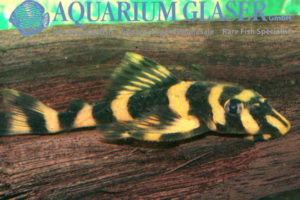
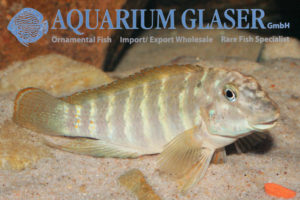
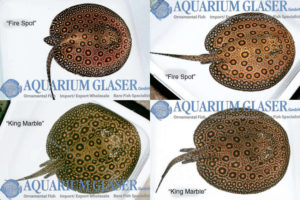
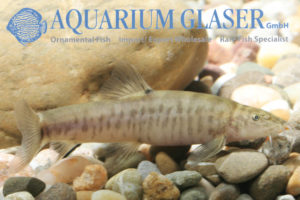
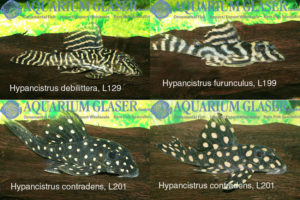
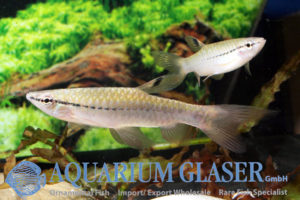
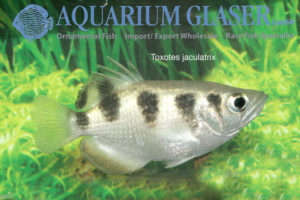
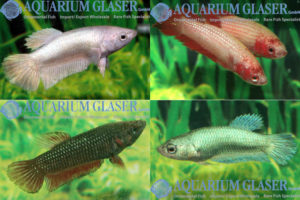
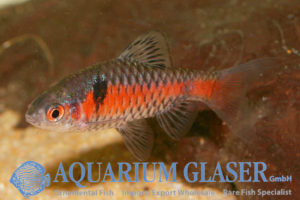
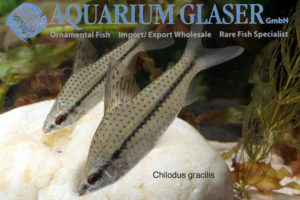
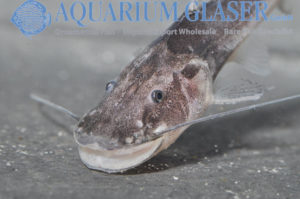
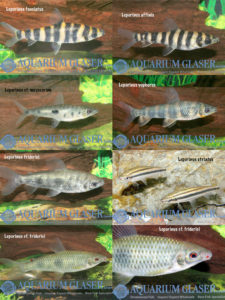
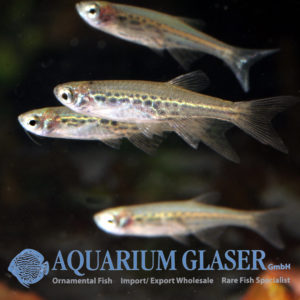
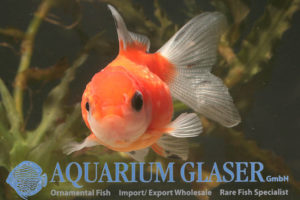
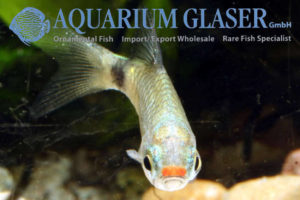
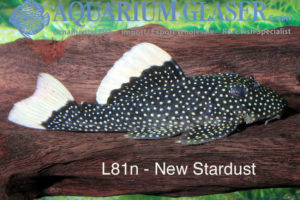
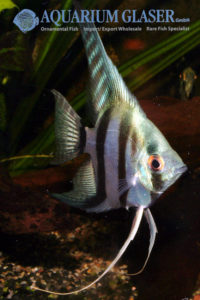
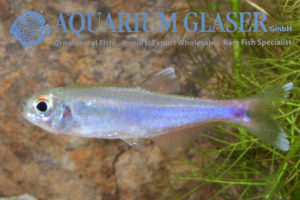
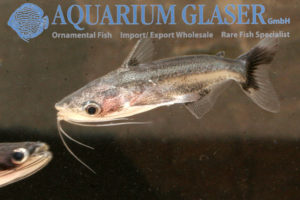
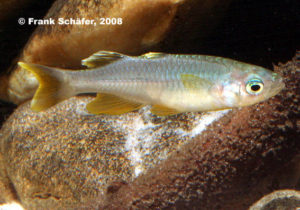
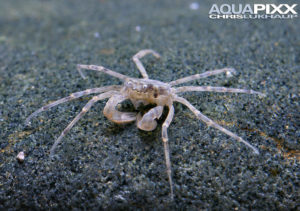
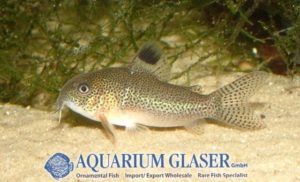
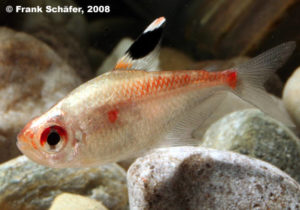
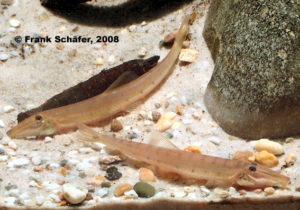
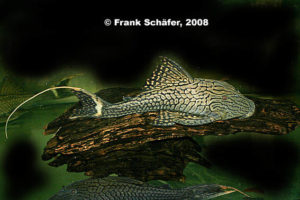
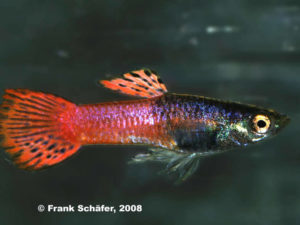
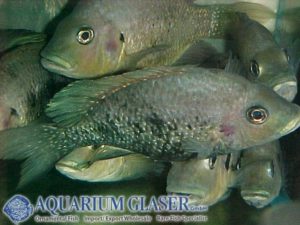
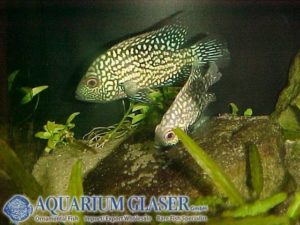
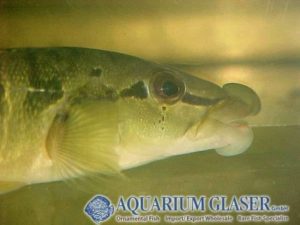
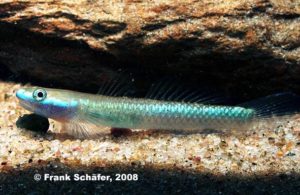
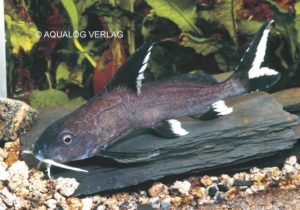
-300x225.jpg)
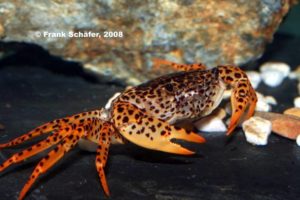
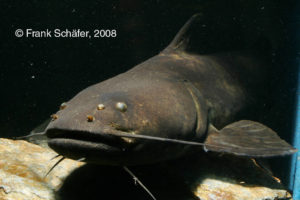
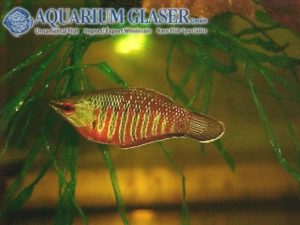
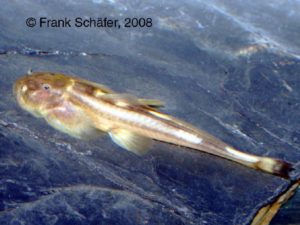
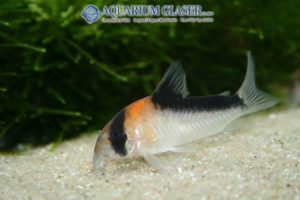
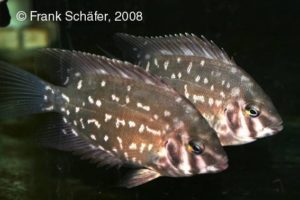
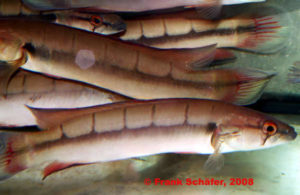
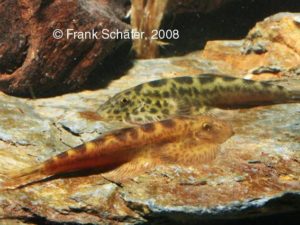
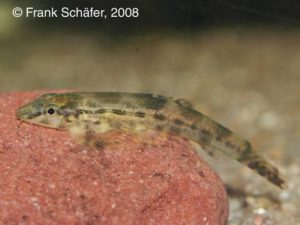
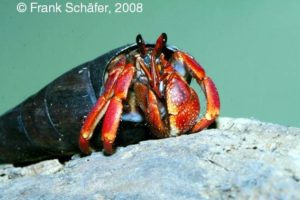
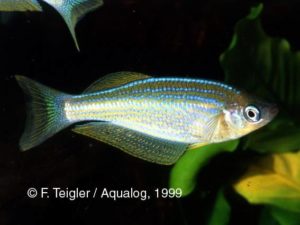
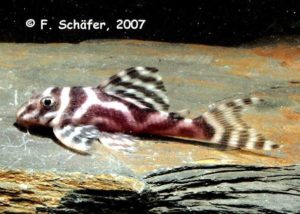
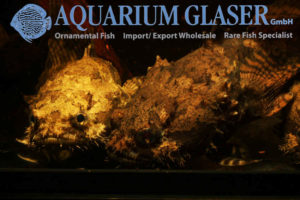
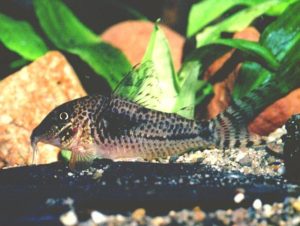
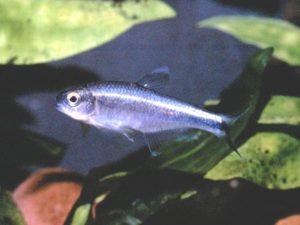
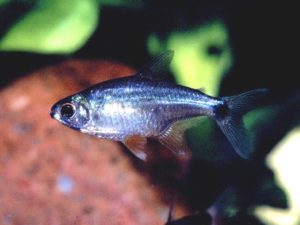
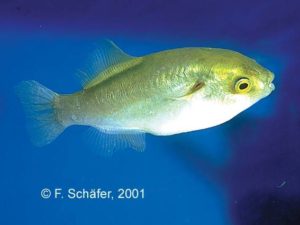
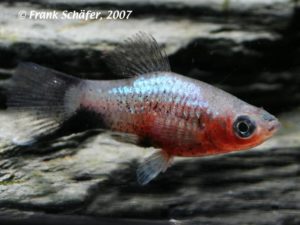
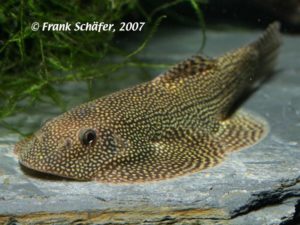
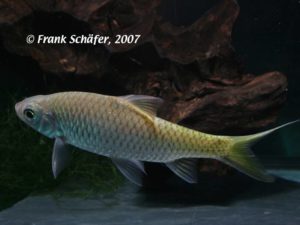
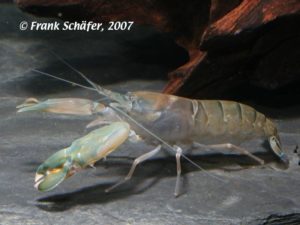
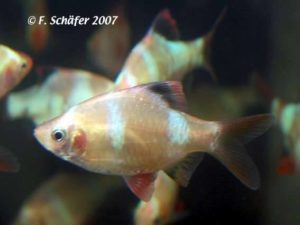
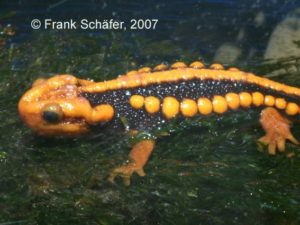
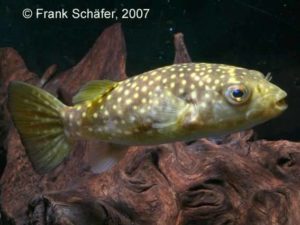
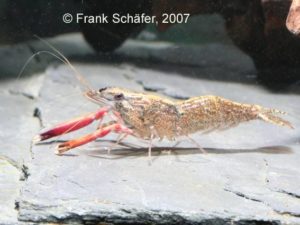
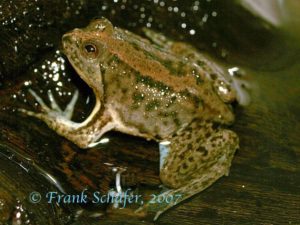
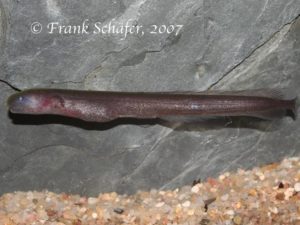
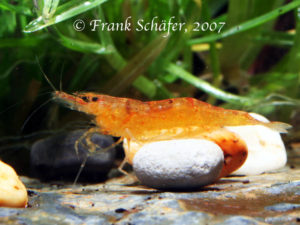
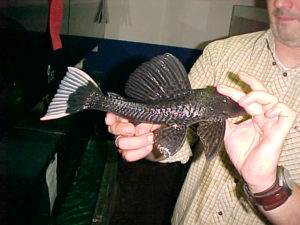
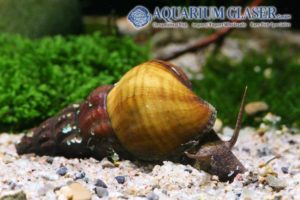
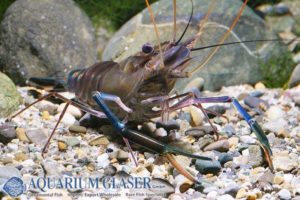
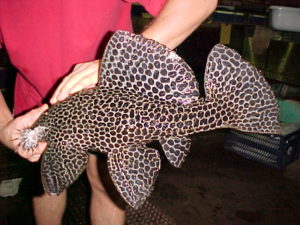
-300x225.jpg)
